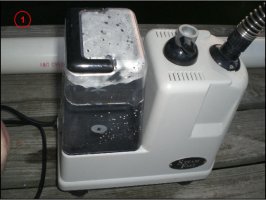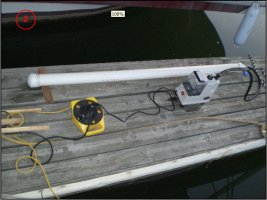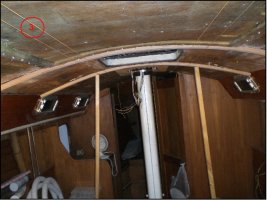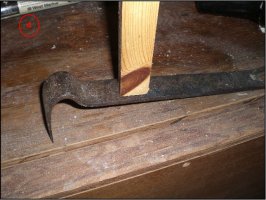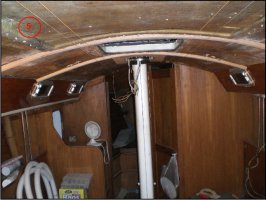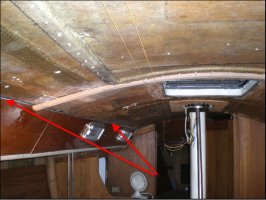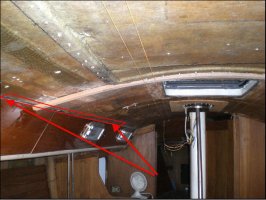If you have a need to bend some wood for different projects here is a method that is working for me. I have to create a framing structure to support a cabin ceiling. So I’m using 1 ½ inch by ¾ inch red oak (which if you’ve ever tried to bend is extremely strong and resistant to bending) and steaming it with an improvised steaming box and then bracing it into position and screwing it to the cabin fiberglass ceiling.
1) Borrow your wife’s clothes steamer (if she has one and isn’t looking) other wise an electric tea pot or a portable propane stove and a tea kettle would work.
2) Adapt a hose to connect it to a section of PVC pipe (I’m using 3 inch) that will accommodate your size of wood. Also the length can be adjusted so you can use different length pipe as well. Make sure and drill a small hole in the end cap at the opposite end of the pipe to cause the hot steam to travel the length of the tube and to prevent any pressure build up.
3) After steaming the wood (so far about an 45 minutes to an hour seems to be working for my lengths) brace it into position using lengths of scrap lumber.
4) It helps to have the high tech adjustable bracing base I’ve employed.
5) Screw it into place (making sure in my case not to go through the deck and only the inner layer) and then remove the bracing and you have a bent piece of wood.
Hope this helps someone in a similar position.
Robert
1) Borrow your wife’s clothes steamer (if she has one and isn’t looking) other wise an electric tea pot or a portable propane stove and a tea kettle would work.
2) Adapt a hose to connect it to a section of PVC pipe (I’m using 3 inch) that will accommodate your size of wood. Also the length can be adjusted so you can use different length pipe as well. Make sure and drill a small hole in the end cap at the opposite end of the pipe to cause the hot steam to travel the length of the tube and to prevent any pressure build up.
3) After steaming the wood (so far about an 45 minutes to an hour seems to be working for my lengths) brace it into position using lengths of scrap lumber.
4) It helps to have the high tech adjustable bracing base I’ve employed.
5) Screw it into place (making sure in my case not to go through the deck and only the inner layer) and then remove the bracing and you have a bent piece of wood.
Hope this helps someone in a similar position.
Robert

